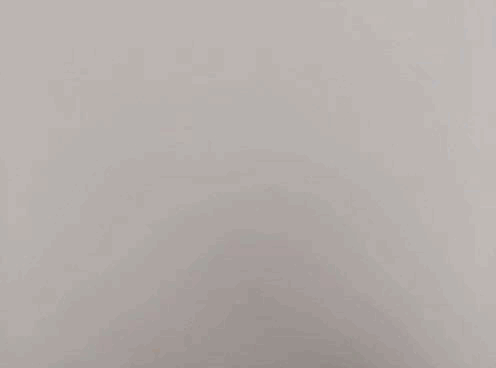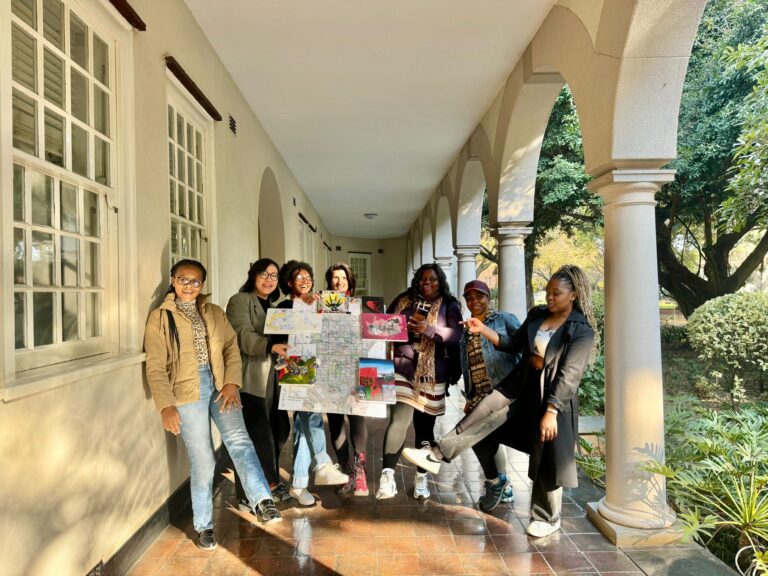Cartographies of Care: Mapping Women’s Everyday Journeys through Pretoria’s CBD
Summary of project
Cartographies of Care asks: whose bodies are seen, how are they supported, and where are gaps where care is needed? The project foregrounds women’s everyday routes as sites of knowledge and belonging. It makes visible the ordinary acts of care that sustain urban life—walking, sharing food, telling stories, stitching together memories.
The collaborative, cross-disciplinary approach (youth, scholarship, housing, artists) demonstrates how urban challenges can be explored through creative practice, research, and community engagement.
The three outputs foreground different modalities of care: archival re-interpretation (Pretoria Finders), relational storytelling and mobility (Transformations), and performative, embodied care plus tactile art (The Care Walkers). Taken together, they offer a rich, multi sensory-based ethnography of a city’s care ecology.
Architecture of the project
What happens when you map care instead of streets? A four-day workshop did exactly that in Pretoria’s Central Business District, turning routine routes into a living, layered story of women’s daily experiences. The Cartographies of Care workshop brought together the Youth on the Move team, the Centre for Advanced Scholarship (CAS), Yeast City Housing, invited artists and architects, and a group of working women from the CBD. The aim wasn’t to chart the city as a static place, but to visibilise the bodies and practices of women navigating urban space, and to map care as a force that moves through and between them.
Day 1: Seeing, Walking, Mapping
The day opened with a talk from Dr. Stephan De Beer, who spoke about “visibilising” the bodies of women in urban space. The energy in the room shifted from lecture to action as participants divided into two groups and wandered the Pretoria CBD around Yeast City Housing. The exercise wasn’t just about where they walked, but how they experienced it—how routes felt, who was present, and what care looked like in ordinary, everyday movement. Back at CAS, strolls were translated onto maps, soon to be layered with more recordings of care in the days ahead.
Day 2: Shared Experiences and New Routes
Day 2 began with a communal sharing of walking experiences, a practice of turning personal journeys into collective knowledge. Wilna DeBeer offered reflections on long-standing work with women in the region and the Tshwane Leadership Foundation, setting a communal tone for the day. The group split into three teams to trace the routes that shape daily life: the aim was less about “where” the city is and more about “how” care and belonging move through its spaces. Even the practical act of seeking places to eat became an exercise in mapping social relations—documenting first impressions of routes and planning how to extend them on the following day.
Days 3–4: Deep Dives into History, Memory, and Making
Day 3 was a city walk into the historic layers of Pretoria—landmarks, roads, and buildings came alive as guides shared stories that reanimated the city’s past. Those stories sparked ideas for an end project, with a final presentation that would showcase discoveries in a form that could travel beyond the workshop.
Day 4 shifted from walking to making. The team turned ideas into tangible artefacts: painting, cutting, and assembling maps that wove personal memories and meanings into the city’s fabric. The process was both informative and collaborative, cultivating community and care as participants expressed themselves freely through creative work.
While the four days unfolded as a blend of exploration, storytelling, and hands-on creation, the final projects are a testament to the city’s history and the collective imagination of the group.
Outputs: Three Cartographies of Care
Group 1 – Pretoria Finders
Pretoria Finders produced a “Passbook Map” using found materials on drawings of pedestrian impressions in the CBD over the two days. The artwork referenced the historical passes that controlled access to spaces for people of colour in South Africa. By juxtaposing exclusionary history with everyday traversal, the group reclaims and documents the spaces people traverse, transforming a passbook into a living, layered map of care. The collage reads as drawings of urban life that can open fully to reveal a cartographic, care-centred world.

Group 2 – Transformations
Transformations challenged the spatially bounded, stigmatized image of Pretoria’s CBD by mapping homemaking practices that move across different spaces in the city. Their storytelling sessions made visible vulnerable moments and violence experienced or witnessed, turning personal histories into “windows” co-created with an artist. The resulting cartographies of care trace mobile homemaking and shared walking routines, presenting an alternative history of Pretoria through care‑driven mobility and relational spaces.

Group 3 – The Care Walkers
The Care Walkers staged a performance project called “Walk of Care” in downtown Pretoria, bound together by a red thread. They followed everyday routes of local women, moving through spaces of care and into places they often avoid, such as government buildings and museums. The walk offered a reimagining of these spaces and served as an act of self-care. Encounters with unhoused individuals they had cared for, and those who had cared for them in places like Marabastad and Burgers Park, brought moments of recognition. At iconic heritage sites like Melrose House and Church Square, personal stories from women in public spaces interrupted the silences of official history. The project culminated in an art installation: on a cloth used by sangomas, each participant hand-stitched symbols of care—tissues, recycled materials, a daughter’s drawing, bottle caps representing migrant women encountered along the way. The installation turned collective walking into a material, intimate gesture of care.